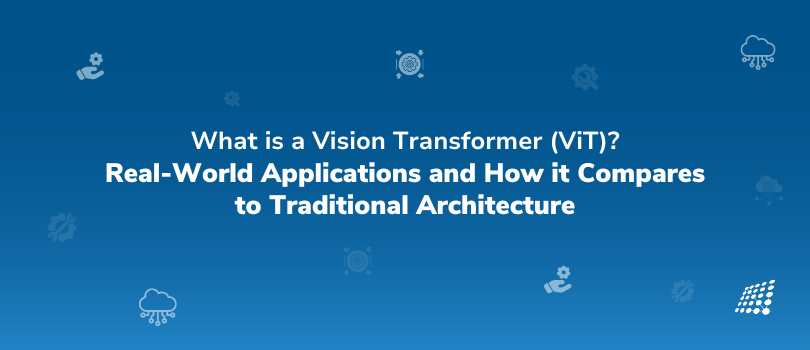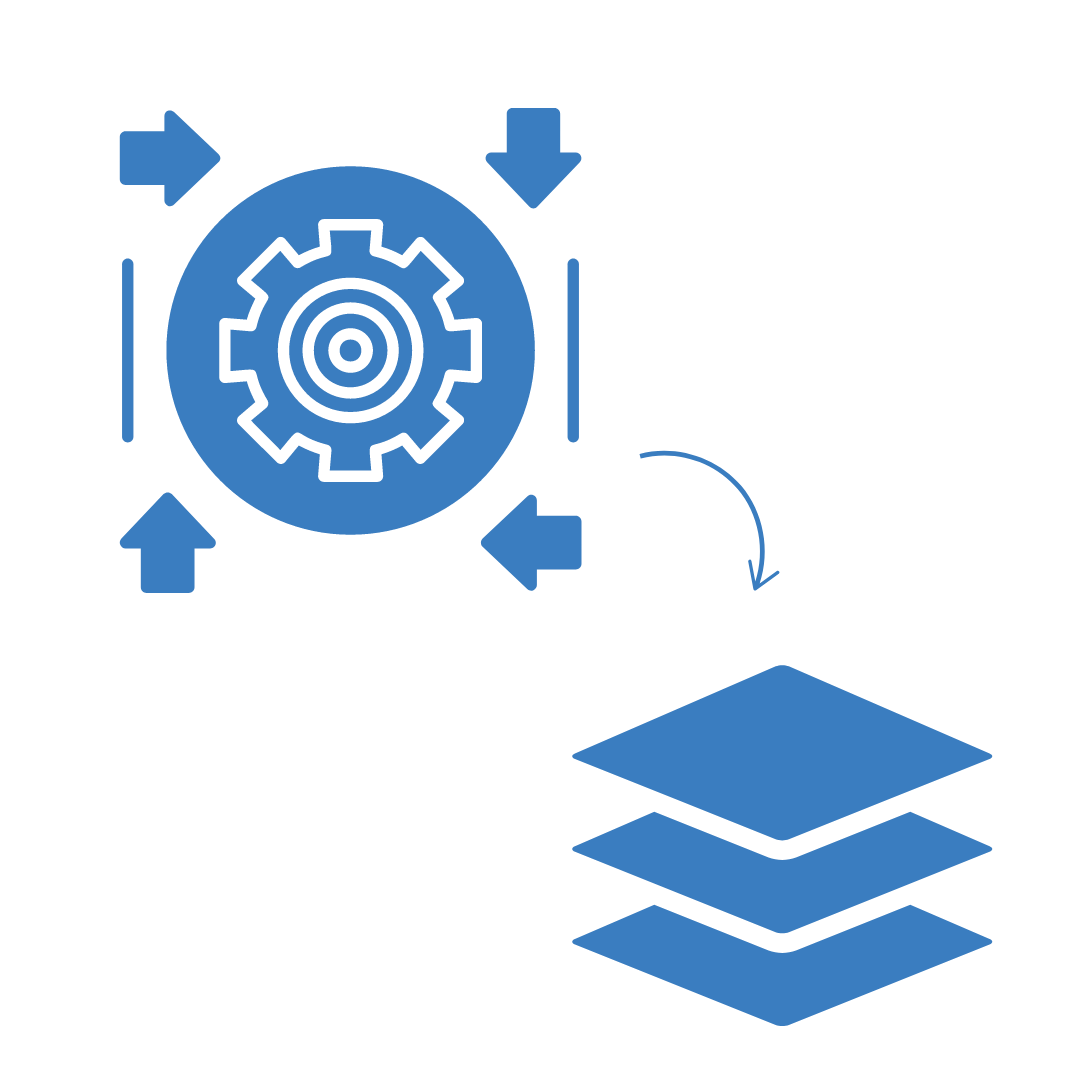What is a Vision Transformer (ViT)? What are ViT’s Real-World Applications?

Artificial Intelligence is improving how computers understand images and how. For more than 10 years, Convolutional Neural Networks (CNNs) have been the standard tool for tasks like image recognition, analysis, and object detection. Now, ViT introduces an innovative method that adapts transformers, initially created for processing natural language, to the domain of vision. This article will examine the distinct qualities of Vision Transformers, look at their practical uses, and evaluate them against conventional CNN frameworks. In this blog, we will look at what is a Vision Transformer (ViT), real-world applications of Vision Transformers, and how it compares to traditional architecture.
What is a Vision Transformer (ViT)?
Launched by Google in 2020, the Vision Transformer (ViT) puts the preeminence of convolutional neural networks (CNNs) in computer vision into question by utilizing a transformer-based structure. Its fundamental concept is to interpret images in a manner analogous to how transformers process sequences of text. ViT does not process whole images directly. Instead, it disassembles them into smaller sections, treats each as a token, and employs self-attention mechanisms to understand the connections between these segments.
Here's an explanation of the Vision Transformer process:
1. Patch Embedding: The image is divided into patches of a set size (for instance, 16x16 pixels), each patch is then converted to a 1D vector and subsequently mapped to a lower-dimensional space.
2. Positional Encoding: As transformers do not inherently recognize spatial arrangements in images, positional encodings are injected into each patch’s embedding, aiding the model in situating every patch within the larger image context.
3. Self-Attention Mechanism: Central to the transformer is its ability to selectively concentrate on various image segments (the patches) and discern their global interrelations.
4. Classification Head: A classification token emerges as the final output, which goes through a multi-layer perceptron (MLP) for image classification.
The revolutionary aspect of ViT is its departure from convolutional layers, shifting the focus to the transformer's capacity to discern inter-patch relationships. Nonetheless, this approach does involve certain compromises, which will be examined subsequently.
Real-World Applications of Vision Transformer (ViT)
Vision Transformers have progressed across multiple application areas, boosting the credentials of AI in computer vision. Let's examine the principal sectors where ViTs are convincing:
1. Image Classification: ViTs have established new records in expansive image classification challenges such as ImageNet, surpassing several leading CNN models. They have become a preferred model for categorizing vast image collections with specific tags, like identifying objects.
2. Object Detection: ViTs exhibit effectiveness in object detection, which is vital for self-driving cars, security, and augmented reality applications. The models' self-attention capability aids in recognizing connections between objects, enhancing the understanding of intricate scenes.
3. Medical Imaging: In health-related fields, ViTs offer promising results in specialties like radiology and cancer diagnostics. They assist in evaluating medical imagery such as MRIs and X-rays to more accurately recognize conditions like cancer. Their simultaneous handling of comprehensive and specific image details provides an advantage over traditional CNNs in spotting subtle indicators.
4. Remote Sensing: ViTs are increasingly operated in satellite image analysis and are useful for tracking deforestation, disaster response, and studying climate change. Their adeptness with vast, high-definition images recommends them for these functions.
5. Robotics: Vision Transformers aid in robotic tasks like item tracking, scene comprehension, and maneuvering through complex settings. Their knowledge of object interrelations gives them a prominent advantage in automated warehouses and drone operation scenarios.
These are some of the popular Vision Transformers Applications you need to be aware of!
Vision Transformer vs. Traditional CNN Architecture

Now for the most pertinent comparison: ViT vs CNN.
While Vision Transformers bring innovation to the table, they also invite comparison with the tried-and-true CNN architecture. Let’s take a closer look at how these two architectures stack up against each other.
1. Architecture Type
- ViT: Transformer-based; uses self-attention to capture relationships between image patches.
- Traditional CNN: Convolution-based; relies on filters and pooling to capture local patterns.
2. Input Processing
- ViT: Splits image into non-overlapping patches (e.g., 16x16 pixels) and treats each patch as a token.
- Traditional CNN: Processes the entire image using convolutional filters applied across different regions.
3. Handling of Global Context
- ViT: Self-attention mechanism captures global context from the start, across all patches
- Traditional CNN: Requires deeper layers to capture global context; initially focused on local spatial information.
4. Positional Encoding
- ViT: Requires explicit positional encoding to maintain spatial relationships between patches.
- Traditional CNN: Implicitly maintains spatial hierarchies through convolutions and pooling layers.
5. Inductive Bias
- ViT: Minimal inductive bias, meaning fewer built-in assumptions about the structure of the image (e.g., locality).
- Traditional CNN: Strong inductive bias for local features, making it inherently good at capturing spatial hierarchies (e.g., edges, textures).
6. Data Requirements
- ViT: Requires large datasets to fully leverage the self-attention mechanism and avoid overfitting.
- Traditional CNN: More efficient with smaller datasets due to the inductive bias that helps capture local patterns.
7. Computational Complexity
- ViT: Quadratic complexity concerning image size (due to self-attention), making it more expensive for large images.
- Traditional CNN: Linear complexity for the number of image pixels, making it more efficient for high-resolution images.
8. Training Speed
- ViT: Slower training process due to high computational cost of self-attention, especially on high-res images.
- Traditional CNN: Typically faster to train because convolutions are optimized for image processing.
9. Scalability with Dataset Size
- ViT: Performs better with very large datasets, achieving state-of-the-art results
- Traditional CNN: Performance starts to plateau on extremely large datasets unless carefully tuned
10. Performance on Small Datasets
- ViT: Struggles with small datasets, prone to overfitting without data augmentation or transfer learning.
- Traditional CNN: Performs well on small to medium-sized datasets, thanks to built-in biases that generalize well with limited data.
11. Use of Pre-training
- ViT: Benefits greatly from pre-training on large datasets (e.g., ImageNet-21k) and fine-tuning.
- Traditional CNN: Pre-training is beneficial but not always necessary for achieving good results on smaller datasets.
Advantages of Vision Transformers
- ViT boasts a self-attention mechanism that affords it a comprehensive understanding of images, enabling the detection of broader dependencies that CNNs might overlook.
- ViTs often outperform CNNs on extensive datasets like ImageNet-21k, achieving leading-edge outcomes.
- Differing from CNNs, Vision Transformers do not depend on spatial hierarchies or convolutional filters, which enhances their flexibility when sufficiently trained.
Disadvantages of Vision Transformers
- Data Requirements: ViTs necessitate extensive training datasets. Lacking ample data, their performance often falls short of CNNs, particularly with smaller datasets.
- Computational Costs: Vision Transformers can demand substantial computational resources, especially for high-definition images. The self-attention layer's quadratic complexity can make it less practical for some applications.
Conclusion

The Vision Transformer marks a significant shift in computer vision, introducing an approach that has yielded remarkable results in expansive visual assignments. Nonetheless, it presents its own set of challenges, such as substantial data needs and computational demands. While ViTs expand what is achievable, CNNs maintain their relevance, especially in environments with constrained data or computing capabilities.
The choice between ViT and CNN architectures largely hinges on the specific context. Ongoing AI advancements suggest that developing composite models that amalgamate the strengths of both could be instrumental in further propelling computer vision technology. Contact our experts to know more!

Be productive using tools and techniques.

What Makes You Unique In A Job Interview


